The Rustic and Regal story of our 2018 Malbec
Malbec sometimes carries a humble aire that belies its royal history. It is neither simply rustic nor regal, yet it is also both. Starting as a down-to-earth workhouse grape planted in southern France by Roman soldiers, it grew to be the favored wine in the royal courts of Europe.
We might not otherwise know about Malbec except that in the twelfth century the grape was the favorite of Eleanor of Aquitaine, whose impressive resumé included reigning as, first, Queen of France, then Queen of England. Malbec later gained a role in blending with the great grapes of Bordeaux and was singled out by Russian Czars. In the new world, especially Argentina, it’s become bigger than ever, though maybe some of its past glory has been overshadowed as it has become better known as the fruit bomb to pair with backyard barbecues. But this grape will not be limited to either pretension or commonness. In fact, Malbec is at its best combining its strengths.
The style behind the Malbec you pop the cork on depends on the terroir in which it’s grown and how the winemakers handle it once picked. The style of our Malbec is first laid out by the high-desert influence of the Portteus Vineyard in the rolling Rattlesnake Hills hunkered above Zillah and the Yakima river. The site is warm but not too hot. It’s breezy but not windswept. And the soils are loamy without being overly fertile. In other words, the grapes were grown in the land of just-rightness.
We try to treat the juice with a similar balance once we tip the grapes into our wooden fermenters. We go for a persistent extraction of flavors from the skins and seeds while preserving a supple texture on the palate. In the cellar, we use a mixture of older and newer French oak barrels to broaden the profile of the wine, making sure it’s aged for just the right amount of time. Where most “black” grapes, AKA red wine grapes, tend toward an earthy color palette, Malbec begins its life a deep purple. A blue subtone beats out the shadings of brick that underlay most other red wines. Barrel aging softens this hard hue, and the blue fades to stained-dark brick.
The fruit flavor follows a similar path. The bright, clarion fruit of a wine’s youth gives way to savory nuance and an ability to enhance a variety of meals. This is where we decided to take our Malbec. There are still some exciting flashes of fruit and a remaining twinge of purple to darken the brick tones.
We think there’s a lot of “just right” going into the bottle with this wine. It’s as rustic as it is regal and ready for the finest cut of steak or simply a plate of well-seasoned beans and rice.
-- Ben Thompson
Winemaker and Production Manager
You can read more stories by signing up for our newsletter below or by clicking on the additional blog links.For all questions and inquiries, please email contact@porttownsendvineyards.com
From Bud to Bottle: Making wine is a year-round journey
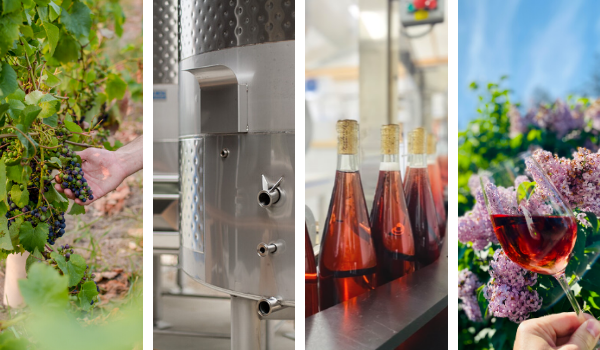
The wine you’re drinking now has a story dating from the evolution of the grapevine, the creation of the soils it grows into at the start of civilization and through the development of Western culture. But let’s skip ahead to a few years after the vines that bore the grapes for this wine were planted. We begin this story in the season in which the grapes were picked….
Harvest (September through October)
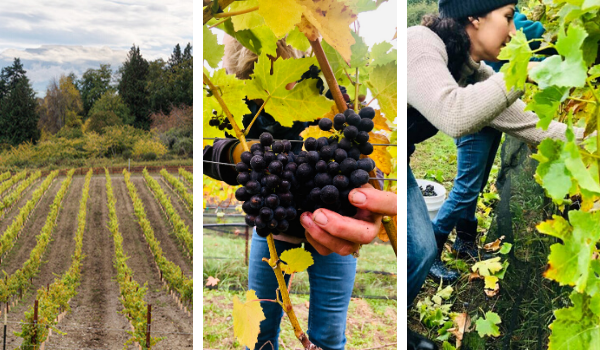
We hand pick the grapes when the perfect combination of sugar and acid levels correspond with the right weather and flavors. The grapes go from hand to bucket to bin to truck to the winery. In each movement we treat the clusters as gently as possible and they show up at the cellar door.
Crush (September through November)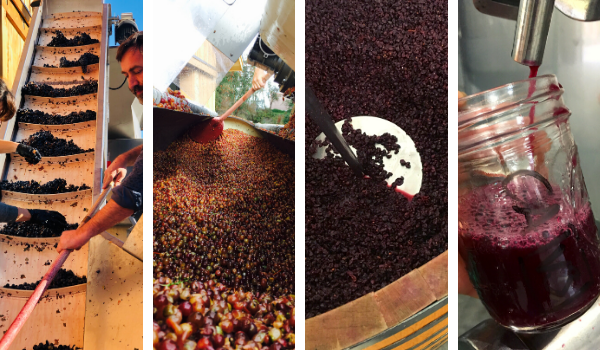
In the winery we sort the grapes then destem, crush or leave them “whole cluster,” depending on the style of wine. The white grapes go straight to the press, while the reds go to fermenter, skin and all. We ferment in various vessels, according to the style of the wine: closed-top stainless steel tanks and French oak barrels for the whites, and open-top stainless steel, French oak and square poly tanks for the reds. The white wines are usually fermented slow and cool to preserve their aromatics. The reds have their ever-rising caps of floating skins “punched down” to keep the skins in the juice to extract color and to introduce just the right amount of oxygen. When the wines are “dry,” meaning the yeast have turned all the sugars to ethanol, CO2 and secondary flavors, we press the reds to barrel and rack the whites to new tanks.
Elevage (Around December)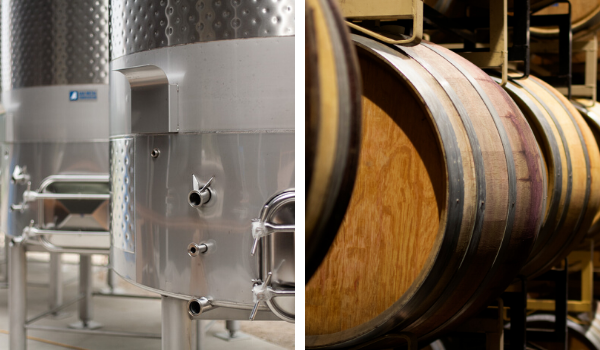
We borrow the French term elevage for the time of rearing or raising the wines slowly over time. In barrel and tank the young wines settle down and slowly release their CO2 from harvest. The reds go through a secondary fermentation called malolactic that smooths the acid profile of the wine. The whites are stabilized with bentonite clay and the cold of winter to be able to be bottled without dropping sediment later on.
Blending to bottling (Up to September)
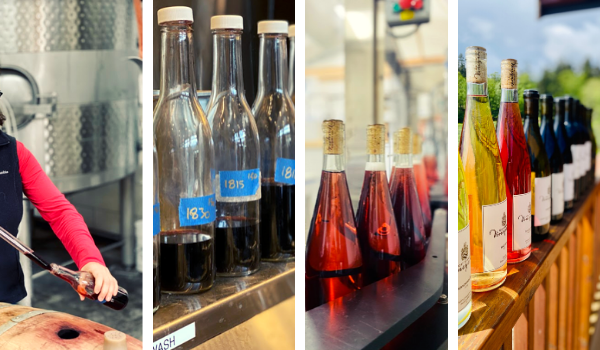
The whites are blended and filtered for bottling, while the reds have some more time yet to go. Most reds will go through another whole vintage – or more – still in the barrel to continue their development. Typically, the higher the tannin levels, the longer the aging. When the wines are all ready, we either keg or bottle them through a very nice Italian made bottling line that protects against oxidation and helps the wines safely age for years. The story continues to your glass then to your lips and on to the conversations and smiles shared among friends.
Sign up for our newsletter below to learn more about our wines, events, sustainable practices, and more. For all questions and inquiries, please email contact@porttownsendvineyards.com
Terroir and ocean breezes: The story of our Estate Wines
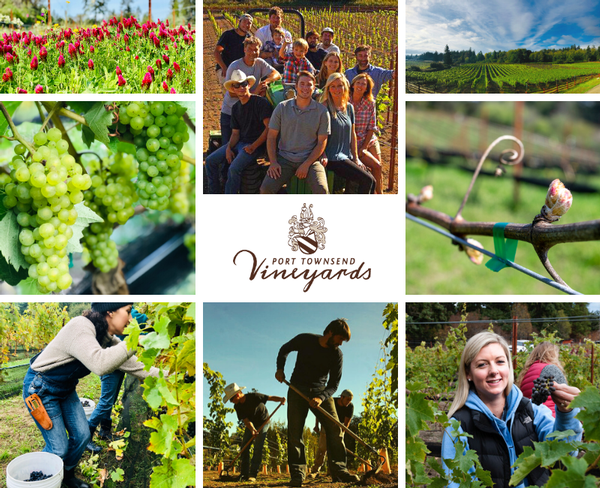
This whole Port Townsend Vineyards project started with a vineyard. The dream was, through hard work and smart decision-making, to grow grapevines on the very edge of the growing zone and create a wine that folks would want to drink. In a fully maritime climate, complete with fog and ocean breezes, the challenge is significant. Our first harvests were so small that we included the yield in our Discovery blends, but the last two vintages have been just large enough to print labels and highlight the work our local vines have done to produce unique, place-based wines.
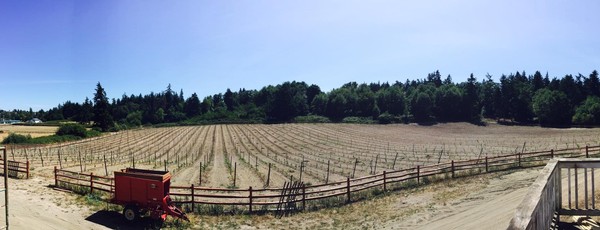
Vines just put in the ground on Portuguese Hill, 2015

The vineyard at sunset, 2019
The thing about terroir (terhe-WAH) is that the flavors your vineyard produces are unique in the world. The more genuine your practices, the more defined the fingerprint of your terroir. That’s why we use only organic practices and let the vineyard bloom in wildflowers in the spring and early summer. If we were more ruthless with the soil and more favorable to chemicals, we could probably yield more fruit. But it would taste as lifeless as the many corporate wines out there. We favor the unique and grow our wines with our minds on the customer who cares about things being done the right way.
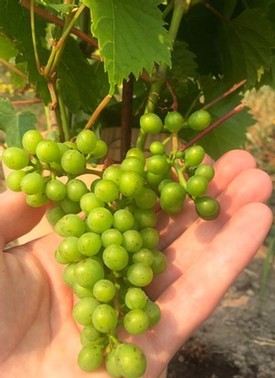
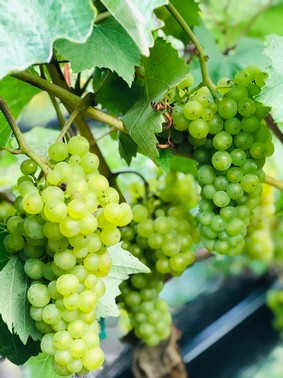
Our grapes, 2016-2019
We love working with our vineyard partners in the warmer parts of Washington and in Oregon. We feel the grapes we bring in from their vineyards complement our local foods and appeals to the tastes of savvy wine drinkers in our region. But if you ask us what we’re really excited about, it’s the wine from the vines that we laid gently into hand-dug holes in those glacial soils on the slopes of an old cow pasture in the center of town. In those wines our real story is told.

Our initial team, 2015
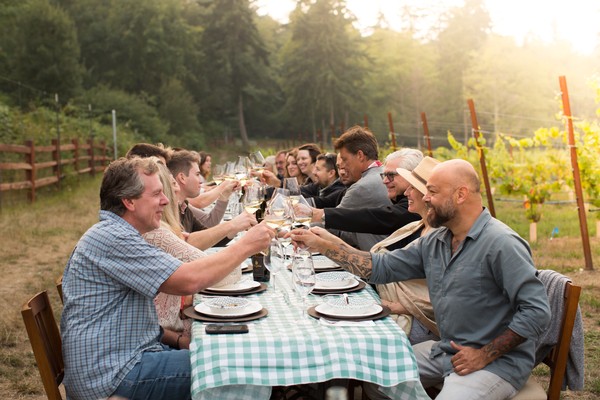
Celebrating with our team, 2018
It may be a fancy of the imagination, but I swear I can taste the effort behind it all and how all Port Townsend Vineyard’s employees and owners have played a role in the vineyard from planting to pruning to picking. Beyond that I taste the soft springs, wet Junes, grey summer mornings, breezy evenings and long Indian summers that I’ve always known and (mostly) loved about my hometown. And to think we can pour all this into a glass to enjoy.
--Ben Thomas, Winemaker & Production Manager
Summer Estate Wine releases
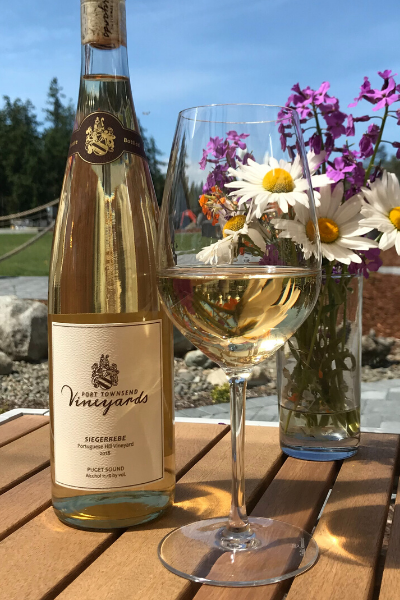
We’re really excited to feature three wines this summer that we saw through from root to bottle. We’re starting with our 2018 Pinot Noir that has more in common with the reds of Germany and the higher vineyards in the Alps. With its lighter color and a more ethereal bouquet of huckleberries and cedar, it’s a wine to sip on a mild, rainy June day or slightly chilled on a warm July day before the evening zephyr gathers.
The next wine we’d like to share this summer is our 2019 Madeleine Angevine. We planted this grape on two separate places on our vineyard. It’s surprising how much the differences in those two sites affected the wines. One was steely and reserved and the other almost came on too strong. Together I feel they strike just the right tone and create a refreshing, dry white with surprising substance.
The final estate release this year will be our 2019 Siegerrebe. It’s probably our favorite grape to grow, and certainly the tastiest to eat straight off the vine. This year’s wine is more subtle on the nose than last year’s, but it dances across your palate like a ballerina.
You can read more about our vineyard in our Visit Us section. Sign up for our newsletter below to learn more about our wines, events, sustainable practices, and more. For all questions and inquiries, please email contact@porttownsendvineyards.com
May in the Vineyard
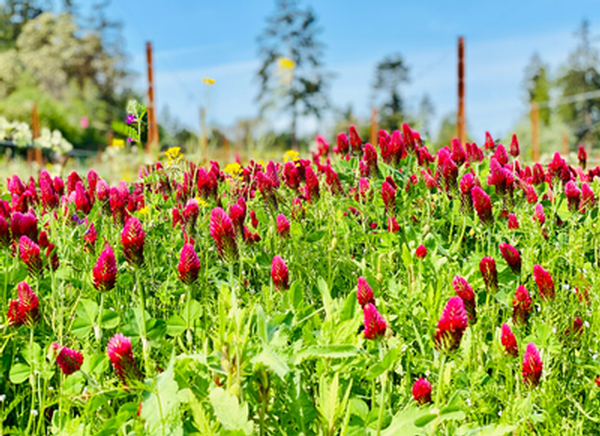
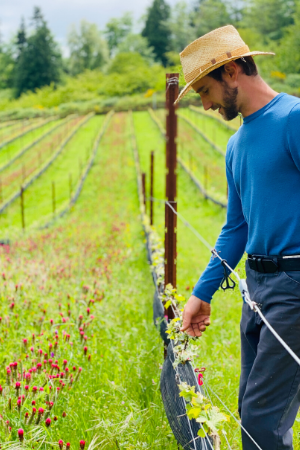 Our immediate task is to thin the new shoots on each plant down to a spacing roughly a fist width apart. Too many shoots on a cane results in a dense canopy impenetrable to sunlight or airflow, heightening the risk of powdery mildew and unripe fruit. Too few might space out the canopy nicely but won't result in much fruit come harvest.The healthiest, most vigorous shoots are chosen and smaller secondaries from the same bud are plucked off.
Our immediate task is to thin the new shoots on each plant down to a spacing roughly a fist width apart. Too many shoots on a cane results in a dense canopy impenetrable to sunlight or airflow, heightening the risk of powdery mildew and unripe fruit. Too few might space out the canopy nicely but won't result in much fruit come harvest.The healthiest, most vigorous shoots are chosen and smaller secondaries from the same bud are plucked off.
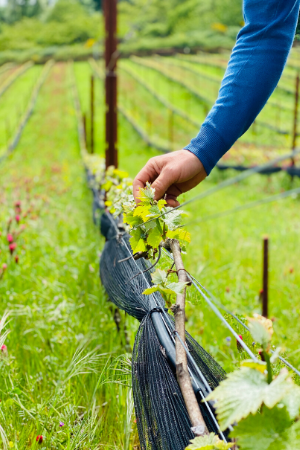
You can read more about our vineyard in our Visit Us section. Sign up for our newsletter below to learn more about our wines, events, sustainable practices, and more. For all questions and inquiries, please email contact@porttownsendvineyards.com
Order your wine, then choose how you get it!
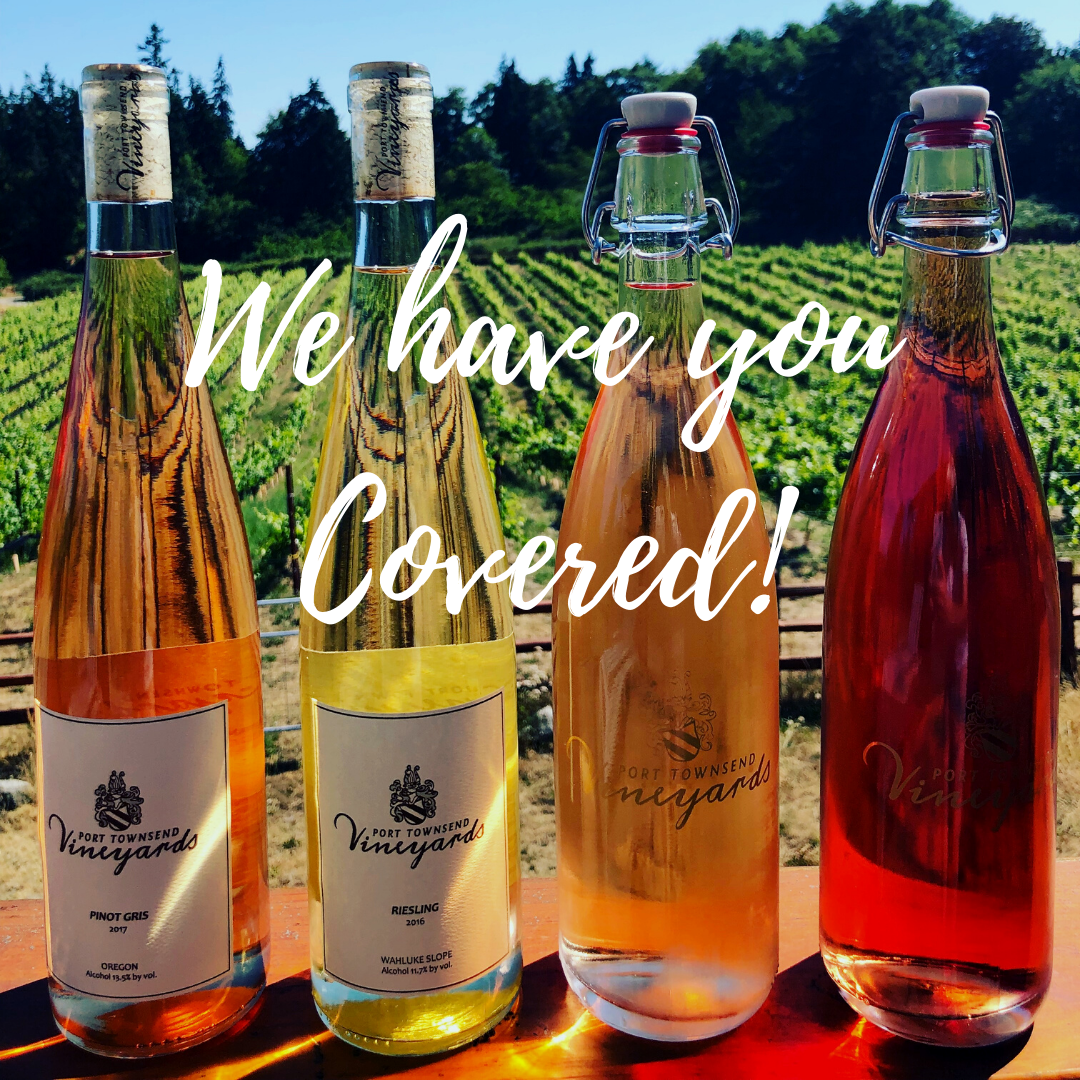
Curbside Pick up:
While our tasting rooms remain closed temporarily, you can drop by by the Winery location from noon to 5pm for our no-contact, curbside pickup station. As you drive up to the tent in front of the large winery doors, you can see the list of our current wines available. No need to leave the comfort of your car! Our staff will come out to take your order, process your payment, and place your wines in the backseat or trunk of your car. Feel free to call ahead to make your order or when you arrive, give us a little honk!
In Town Delivery:
We are proud to announce our new in town delivery option. You can order wines online, via email, or over the phone to be delivered to your home in and around the Port Townsend area. Just select In Town Delivery in the shipping section at checkout. For orders of three or more bottles, this free no-contact service covers Port Townsend, Chimacum, Port Hadlock, Port Ludlow, Quilcene, Sequim, and Port Angeles. Order today!
Shipping in Washington State:
We know that right now it is hard to not be with the ones you love. You can still show them you are thinking about them with a few bottles of Port Townsend Vineyards wines. For our friends, family, and community outside of the Port Townsend area we are offering complimentary shipping anywhere in WA state for orders of three or more bottles. Select from our current menu and choose Complimentary Shipping at checkout.
--Kristin Myers
You can call 360.344.8155, stop by the Winery at 2640 W Sims Way, or check out our wine page to begin your order. Sign up for our newsletter below to learn more about our wines, events, sustainable practices, and more. For all questions and inquiries, please email contact@porttownsendvineyards.com
